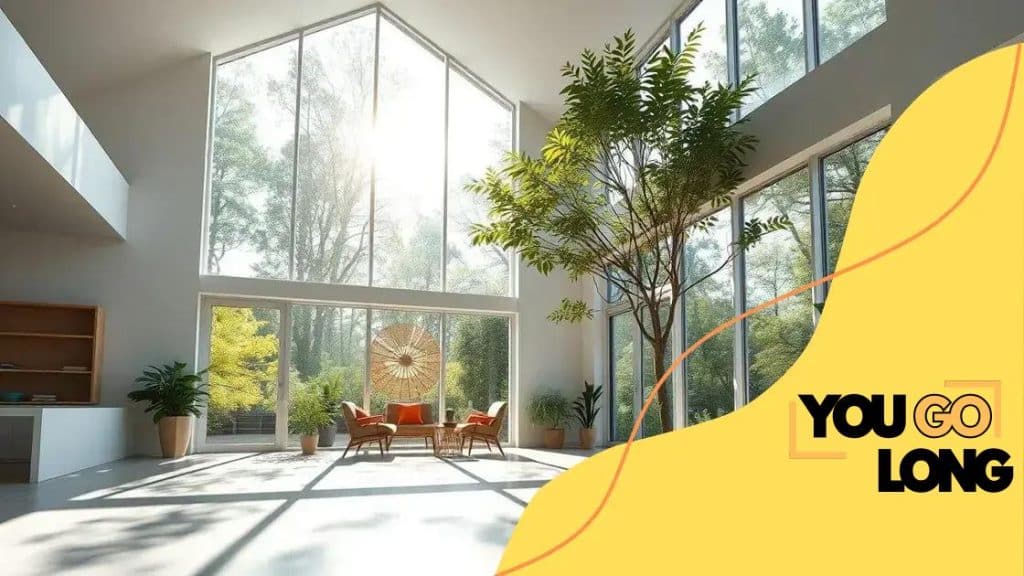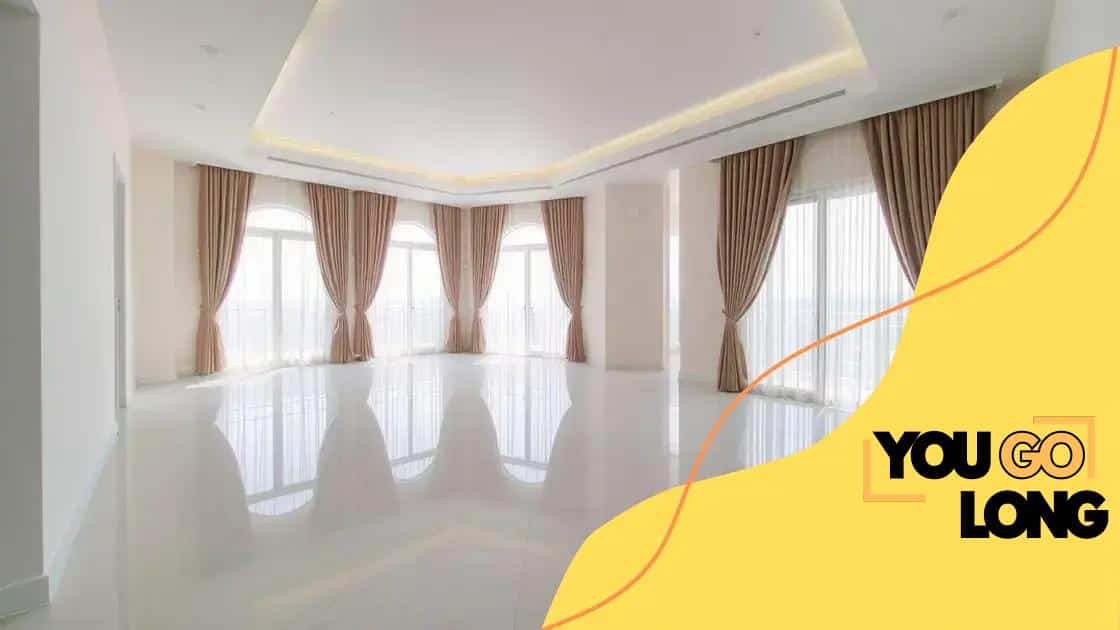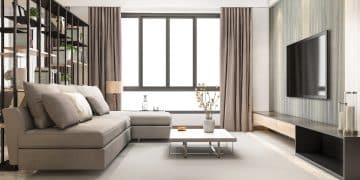How to design a home for maximum natural light

Advertisement
To design a home for maximum natural light, incorporate large windows, use reflective materials, choose low-growing plants for landscaping, and enhance with artificial lighting to create a harmonious and bright living space.
How to design a home for maximum natural light is a topic many homeowners are eager to explore. Have you ever noticed how a well-lit space can influence your mood? In this article, we’ll dive into practical ways to enhance sunlight in your home.
Understanding natural light and its benefits
Understanding natural light is crucial when designing your home. It not only brightens spaces but can also affect your well-being. Homes flooded with natural light have a welcoming atmosphere, making everyday life more enjoyable.
Benefits of Natural Light
Exposure to natural light offers numerous benefits. It boosts mood, increases productivity, and even enhances creativity. When you let sunlight in, you’re inviting a sense of harmony into your space. In addition, natural light can help regulate your body’s internal clock, making you feel more alert during the day and ready for sleep at night.
Advertisement
- Improves mood and reduces stress
- Enhances focus and productivity
- Reduces energy costs
- Promotes better sleep patterns
Furthermore, natural light is an environmentally friendly option. Using sunlight efficiently can decrease your reliance on artificial lighting, helping lower your electricity bills. It’s essential to consider the placement of windows in your home to maximize this benefit. Large windows, skylights, and even glass doors can create an inviting environment.
How to Maximize Natural Light
To harness the full potential of natural light, consider these strategies. Orienting your home to capture sunlight throughout the day can make a significant difference. Pay attention to how the sun moves across your property to identify the best spots for windows.
Incorporating mirrors can also enhance the experience by reflecting light throughout your rooms. Opt for lighter colors on walls and furniture to help bounce light and create an airy feel. Moreover, using sheer or light-filtering window treatments can soften harsh sunlight while still allowing light to enter.
Ultimately, understanding the role of natural light in your home design brings benefits that greatly enhance your living experience.
Advertisement
Key architectural features to maximize light
When designing a home, emphasizing key architectural features can significantly maximize light. Incorporating thoughtful designs creates a more vibrant living space filled with natural light. Consider how architectural elements can be used to enhance your home’s brightness and warmth.
Optimal Window Placement
One of the most effective ways to increase natural light is through optimal window placement. Prioritize larger windows on south-facing walls for maximum sunlight. Include clerestory windows or skylights to allow light to enter from above, illuminating darker areas of your home.
- South-facing windows capture the most sunlight.
- Clerestory windows increase light without sacrificing privacy.
- Skylights brighten rooms with high ceilings.
- Floor-to-ceiling windows can enhance views and light.
Another vital aspect involves considering the shape of your home. Open floor plans enable light to flow freely from room to room. By removing walls between spaces, you can utilize natural light more effectively, making your home feel more spacious and welcoming.
Use of Materials
The materials you choose can influence how light interacts with your space. Lighter paints and finishes reflect light, amplifying brightness throughout your home. Consider using reflective materials like glass or polished stone for countertops. These elements not only reflect natural light but also add a modern touch to your design.
Incorporating light-colored or sheer window treatments is another approach. Such treatments allow light while maintaining privacy. Utilizing these features ensures that your home is not only bright but also cozy and inviting.
Adapt your home’s structure to simulate natural lighting effects. By understanding key architectural features and making thoughtful decisions in your design process, you can create a living space that thrives on natural light.
Choosing the right materials for light

Choosing the right materials is essential for maximizing natural light in your home. Certain materials can enhance brightness and create a spacious feel. Consider how each choice influences the overall ambiance and functionality of your space.
Reflective Surfaces
One effective way to increase light in a room is by selecting reflective surfaces. Mirrors, glass, and polished tiles can bounce light around, making a space feel brighter and larger. Using glossy finishes on walls and cabinets can further amplify this effect.
- Mirrors can create depth and visually expand rooms.
- Glass surfaces in furniture enhance light flow.
- Polished tiles add shine and reflect light beautifully.
- Using light-colored cabinetry will brighten kitchens and bathrooms.
In addition to reflectiveness, color plays a crucial role in maximizing natural light. Opt for lighter shades on walls and ceilings, as they help reflect light and keep spaces from feeling cramped. Light colors can create a warm, inviting atmosphere while maintaining an open feel.
Window Treatments
Another important factor is the selection of window treatments. Sheer curtains or light-filtering shades can soften harsh sunlight while still allowing light to flow through. Consider using natural fabrics that provide privacy without blocking all the light.
Additionally, using UV-blocking window films can protect your furnishings while still letting in natural light. This balance ensures that you can enjoy the brightness without the risk of fading or damaging your décor. Combine different treatments to provide flexibility in controlling light levels throughout the day.
By carefully selecting the right materials and finishes, you can truly optimize your space for natural light, creating a joyful and energizing environment.
Landscaping tips for unobstructed sunlight
Landscaping your yard is a wonderful way to enhance the beauty of your home while ensuring unobstructed sunlight reaches into your living spaces. The right design can not only improve your outdoor aesthetics but also significantly impact the amount of natural light that enters your home.
Choose the Right Plants
Selecting the appropriate plants is essential. Opt for low-growing shrubs and flowers near your windows to prevent blocking natural light. Taller trees should be planted further away from your home to avoid creating shadows that darken your interior.
- Plant low-maintenance, low-height plants near windows.
- Use trees strategically for shade without blocking sunlight.
- Incorporate deciduous trees for seasonal light changes.
- Consider native plants that thrive and require less water.
In addition, it’s crucial to evaluate the layout of your landscaping. Design pathways, rock gardens, or raised beds in a way that allows light to filter through. This open design encourages movement while maximizing sunlight access.
Creating Open Spaces
Creating open spaces around your home can also enhance the exposure of sunlight. Avoid dense landscaping close to the house, which can cause dark areas indoors. Instead, consider hardscape elements like patios or decks that create inviting spaces while allowing light to flood in.
Additionally, keeping your yard clutter-free contributes to the overall flow of light. A well-organized garden not only looks appealing but also maintains an open atmosphere that embraces natural light. Regular maintenance of your landscaping will help ensure that trees and shrubs do not encroach on sunlight pathways, supporting optimal light conditions year-round.
By applying these landscaping tips for unobstructed sunlight, you can create an inviting outdoor atmosphere while maximizing natural light in your home.
Ways to use artificial light to complement natural light
Using artificial light effectively can significantly enhance the effects of natural light in your home. Understanding how to complement sunlight with other lighting options will create a well-lit and inviting atmosphere. Thoughtful lighting can bring out the beauty of your space, especially during the evening or on cloudy days.
Layered Lighting
One key strategy is to use layered lighting. This involves combining different types of light sources, such as ambient, task, and accent lighting. Ambient lighting provides overall illumination, while task lighting focuses on specific areas, like reading nooks or kitchen counters. Accent lighting helps highlight artwork or architectural features.
- Use ceiling fixtures or recessed lighting for ambient light.
- Incorporate desk lamps or under-cabinet lights for task lighting.
- Accent with wall sconces or LED strip lights.
- Adjust the brightness with dimmers for versatility.
Creating layers allows you to adapt the lighting based on the time of day and the activities at hand, making your living space versatile and inviting.
Color Temperature
Another important aspect is the color temperature of artificial light. Choosing bulbs between 2700K to 3000K mimics the warm glow of natural light during the day, creating a cozy atmosphere. You can switch to cooler tones—around 4000K—when more focused light is needed, like during detailed tasks.
Incorporating smart bulbs can add convenience, allowing you to change the color temperature based on your needs. This feature can make a significant difference in how natural light and artificial light interact within your space. Adjusting your artificial light to complement the available daylight promotes a harmonious and balanced environment.
Ultimately, using artificial light thoughtfully alongside natural light can transform your home into an inviting and comfortable haven, regardless of the time or weather.
In summary, designing your home to maximize natural light involves careful planning and consideration of various elements. You can enhance brightness and comfort by choosing the right architectural features, utilizing reflective materials, and selecting appropriate landscaping. Additionally, effectively incorporating artificial lighting can create a harmonious balance with natural light. Together, these strategies contribute to a welcoming and uplifting environment that improves your daily living experience. Embracing these tips will not only brighten your home but also enhance your lifestyle.
FAQ – Frequently Asked Questions About Designing for Natural Light
How can I maximize natural light in my home?
You can maximize natural light by positioning larger windows on south-facing walls, using reflective materials, and keeping landscaping low near windows.
What are the benefits of using artificial light alongside natural light?
Using artificial light helps create a balanced and inviting atmosphere, especially during cloudy days or in the evening, enhancing visibility and comfort.
What types of plants should I use to keep sunlight flowing into my home?
Opt for low-growing shrubs and flowers near windows. Taller plants should be positioned further away to avoid blocking sunlight.
What is layered lighting and why is it important?
Layered lighting combines ambient, task, and accent lights to create depth and flexibility in a space, allowing you to adapt the lighting to various activities.





